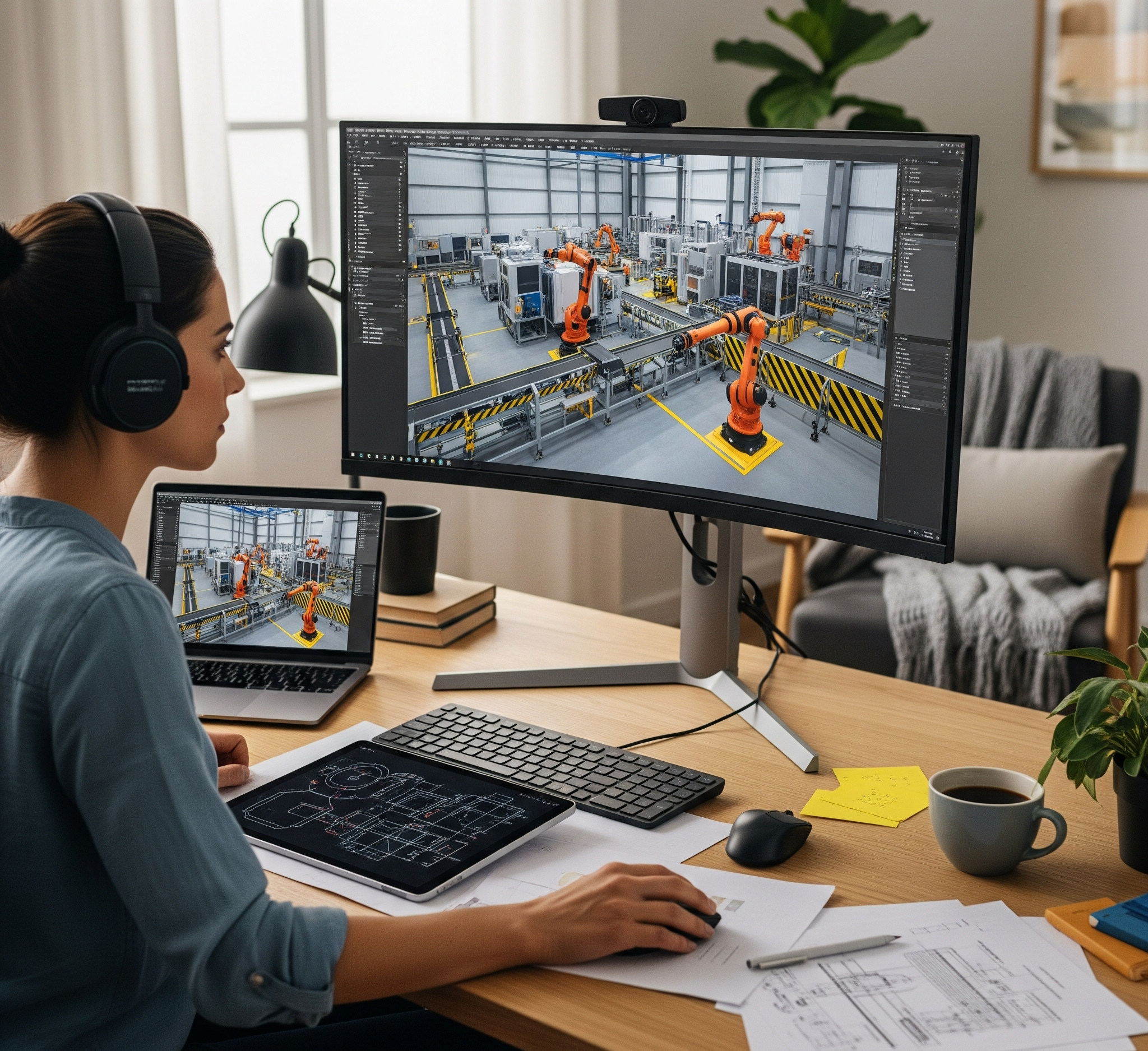
Remote Work for Engineers
Remote Work for Engineers: Can Manufacturing Embrace Hybrid Models?
By: Destiny Dickerson
In the manufacturing sector, the rise of hybrid work, where engineers divide their time between on-site responsibilities and remote environments, is becoming increasingly relevant. For decades, engineering and manufacturing roles were seen as inherently tied to the factory floor. However, digital transformation has challenged this assumption, making it possible for certain aspects of engineering to be performed away from the plant.
Hybrid models in manufacturing are emerging for good reasons. Remote and flexible arrangements have demonstrated clear benefits for engineers, including improved work-life balance and increased job satisfaction. For companies, hybrid work expands access to talent beyond geographic limitations, which is particularly valuable in an industry that often struggles to recruit specialized engineering expertise. Data also shows that a growing number of manufacturers are adopting hybrid policies to remain competitive in retaining and attracting skilled workers.
Real-world examples highlight the shift. Ford has adopted remote and hybrid work arrangements for its engineering and design teams, enabling them to collaborate virtually on projects that are not tied to physical production. Siemens has implemented a “work-from-anywhere” model, where planning and remote monitoring functions are managed digitally, while core manufacturing staff remain on-site. These cases demonstrate that while production roles still require physical presence, engineering, design, and administrative roles can operate effectively in hybrid setups.
The benefits go beyond employee satisfaction. Companies that integrate hybrid models also unlock efficiency gains. For example, small manufacturers that struggled with communication during remote transitions found success by adopting centralized project management systems. These tools streamlined workflows, improved coordination, and even boosted project completion rates. Similarly, large organizations are investing heavily in digital infrastructure, enabling remote predictive monitoring, simulation, and data analysis without disrupting production.
Still, challenges remain. Cybersecurity is a growing concern as engineers connect remotely to sensitive systems and intellectual property. Additionally, maintaining team cohesion and knowledge sharing across hybrid teams requires planning. Manufacturers also need to rethink mentorship and training, as much of engineering knowledge is passed on through in-person collaboration. Addressing these challenges involves robust digital security systems, structured hybrid schedules, and ongoing investment in communication tools.
Despite the obstacles, hybrid work in manufacturing is not a passing trend. Companies such as Cisco report that manufacturers are redesigning their workflows to accommodate hybrid models, with many investing in more secure systems to support this transition. What is emerging is a blended approach where physical and digital environments complement each other, making operations more resilient and adaptable.
In conclusion, remote work for engineers in manufacturing is not only possible but already underway. While factory floors will always require hands-on expertise, hybrid models are proving to be a valuable solution for engineering and design functions. The manufacturers that embrace this shift will position themselves for long-term success by retaining talent, improving efficiency, and building resilient systems that adapt to the future of work.
Sources
- https://gitnux.org/remote-and-hybrid-work-in-the-manufacturing-industry-statistics/
- https://wifitalents.com/remote-and-hybrid-work-in-the-engineering-industry-statistics/
- https://hrpanorama.home.blog/2024/11/30/workplace-flexibility-in-manufacturing-can-it-work/
- https://blogs.vorecol.com/blog-what-challenges-do-organizations-face-when-transitioning-to-a-hybrid-work-model-and-how-can-they-overcome-them-147765
- https://www.cisco.com/c/en_uk/solutions/industries/manufacturing/hybridwork.html